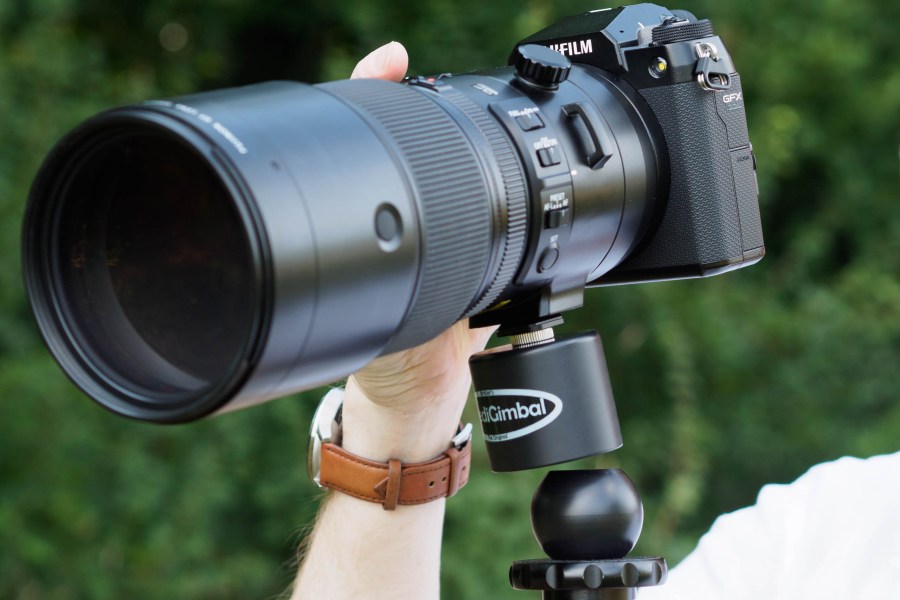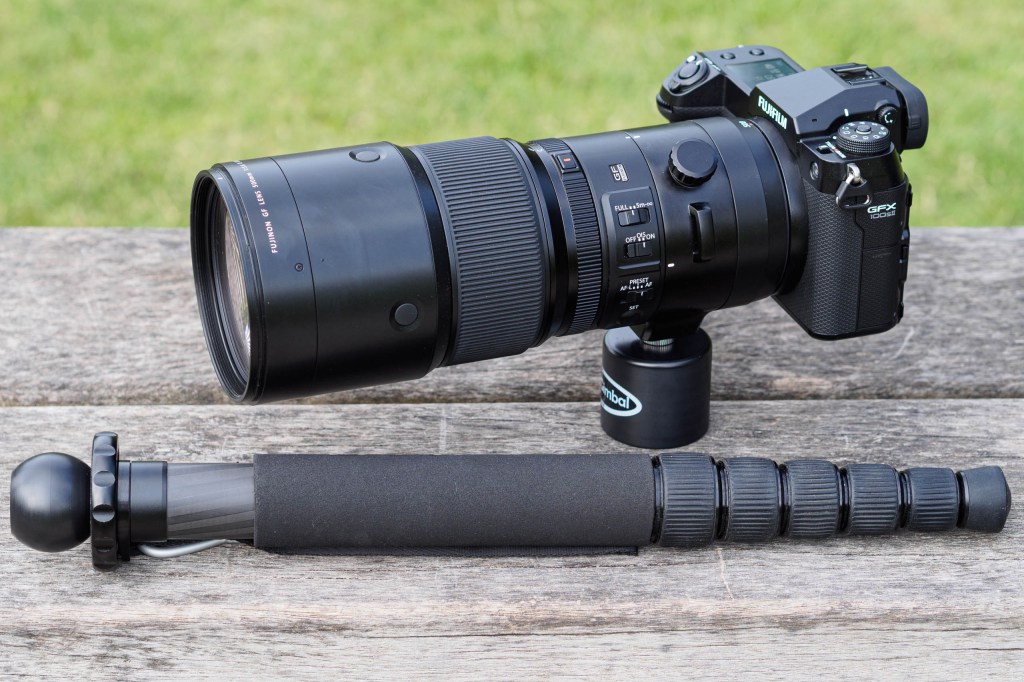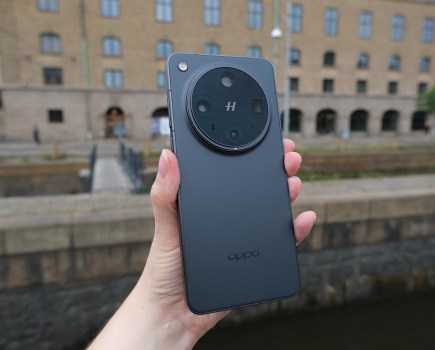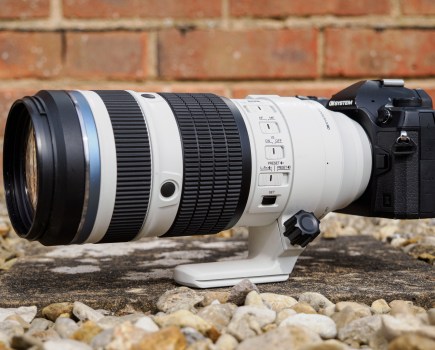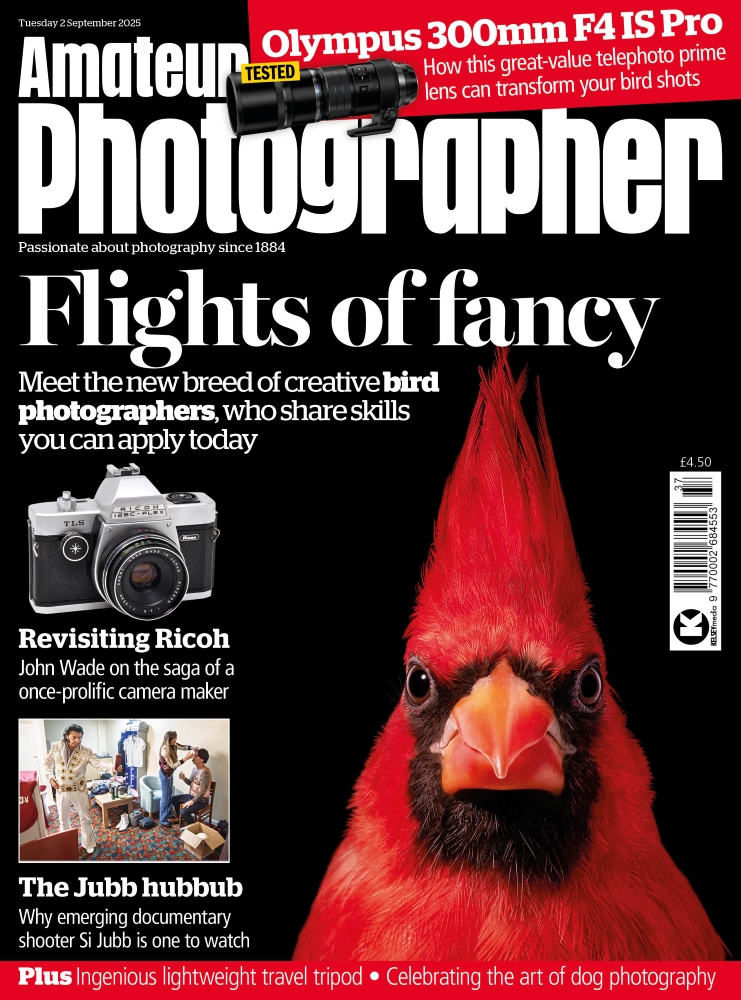Amateur Photographer verdict
The Original SpeedGimbal is a clever head design that’s much quicker and easier to use than conventional tilt or ball heads. If you shoot a lot with long lenses and monopods, buy one now.- Uniquely quick to use
- Practically unrestricted camera movement
- Lightweight
- Affordable price
- Can add bulk to lenses
The Original SpeediGimbal is a head that aims to makes things easier for photographers who use monopods. It’s like a ball-and-socket head, except the two parts are separate from each other. Screw the ball onto your monopod and the cup onto your camera (or vice versa), and you can use a monopod to support a long lens, without having it physically attached to your camera.
The Original SpeediGimbal: at a glance
- £79
- Two-part monopod/tripod head
- 3/8in attachment threads
- 1/4in thread adapters included
- Ball: 42mm diameter
- Cup: 50mm diameter x 44mm tall
- 125g total weight
- speedigimbal.co.uk
If you shoot a lot with large telephoto lenses, you’ll know that hand-holding them for long spells of time can be tiring and impractical. The classic solution to this is to use a monopod to take the weight. But having what is essentially a long stick attached to your camera or lens can be awkward, especially when you need to be able to move quickly, for example to keep track of moving subjects such as wildlife.
The Speedigimbal’s advantages over traditional tilt or ball-and-socket heads are huge. For a start, you can just drop the camera onto the monopod instantly, with no need to mess around with a screw fixing or even a quick release plate. Likewise, you can take your camera off your monopod just as quickly when needed.
Most importantly, you get almost unrestricted camera movement. As a bonus, if you fit the ball onto your monopod, it provides a comfortable grip for using the monopod as a walking pole. The cup section does add a bit of bulk onto lenses, though, especially if you have keep the full tripod foot in place too.
The Original SpeediGimbal: Key features
- Spare parts: If you regularly use more than one camera support or lens, spare ball and cup sections are available individually for £40 each
- Reversible design: You can use the setup with either part attached to your camera and the other to your monopod, depending on your preferences
- Two sizes: I tested the Original SpeediGimbal Kit designed for large lenses. A smaller version is also available for £49
- Camera/ monopod fitting: With 3/8in threads and 1/4in adapters supplied, the head should fit onto any camera/lens and monopod
SpeediGimbal is manufactured from black nylon plastic, and at 125g, it adds minimal weight to your bag. Crucially, the two parts move smoothly and freely against each other, without ever binding.
I tested the SpeediGimbal shooting at an airshow with the Fujifilm GFX100S II and GF500mm F5.6 lens. This is by no means the heaviest combo around, but I still appreciated being able to drop it onto a monopod and make use of the additional support, especially when slowing the shutter speed down for increased propeller blur.
Crucially, the design meant I could freely and easily pan and angle the camera to track the airplanes’ movements.
SpeediGimbal is at the centre of a wider ecosystem of camera supports and accessories. This includes a car window attachment, a base plate for use in wildlife hides, a mini monopod, and a sling strap. There’s even a full support system for wheelchair users. See the firm’s website for full details.
The Original SpeediGimbal: Our Verdict
I’ve never enjoyed using monopods in the past, as I find it awkward and annoying having one attached onto my camera. But this device fixes that at a stroke. I usually dislike using the term “game-changer” as it’s become devalued by over-use, here it’s entirely justified. If you regularly use long lenses with a monopod, I’d strongly recommend getting one.

Follow AP on Facebook, X, Instagram, YouTube and TikTok.

